Landmark 18.1 update with Land.XML
LANDMARK RUNS IN WINDOWS 8 TABLET
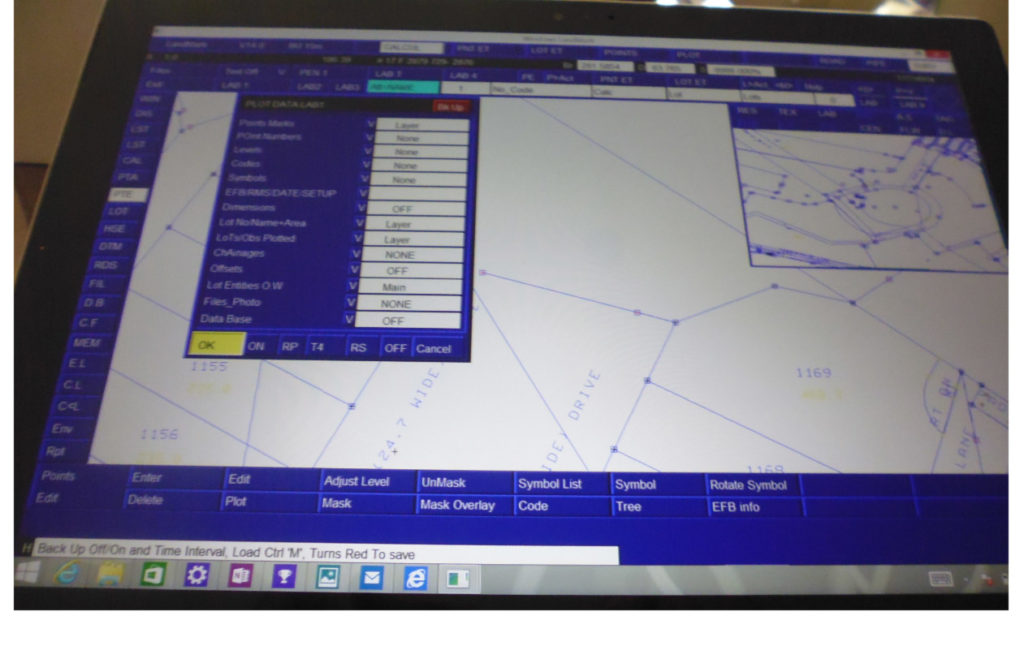 The land.xml development started at end of 2008 with a large data base put in landmark, plus extra lots types with option to over write RM dimensions with the first land.xml file lodged at end of 2012. There have been a various types of lodged between 2 and 320 lots subdivision and comprising party walls with kerb alignments, rural and green fields have been addressed together with user usage.
The land.xml development started at end of 2008 with a large data base put in landmark, plus extra lots types with option to over write RM dimensions with the first land.xml file lodged at end of 2012. There have been a various types of lodged between 2 and 320 lots subdivision and comprising party walls with kerb alignments, rural and green fields have been addressed together with user usage.
The SURVEY DATA BASE
A new data base has been added to the software, which can be viewed and edited on screen with its own Entity Switches and Pen allocations, linked to points and lots. The data can plotted on long section in both Pipe or Road. This contains the Land.xml elements and attributes. These Land.xml files can be can automatically generated from the landmark data with little or no editing. The data base can also be used for other applications within the software. There are 90 different fields which can assign to a point or lot. Each point or lot can use up to a total of 210 characters in total for its fields. The data captured in the field can transferred in SURSUB .The following is some of the fields that can be recorded information eg name , description, class, state, role, type, condition, origin Survey, parcel Format, use Of Parcel , legal Area, note, building No, building Level No, D.P No , Client Name , Address , purpose, Tree Name , Photo Name to display Photo, parcel Type, order, class, vertical Datum , currency Date, Pit Name, Over Land/Area Co , Pit Type x , owner, lot Entitlements, road Name , road name Suffix , road Name Type, road Type , address Type, flat Type, flat Number, floor Level Type, floor Level Number, title Type, title Type , etc. This data base can be transfer survey data direct.
Land.xml setup of Eplan and DP
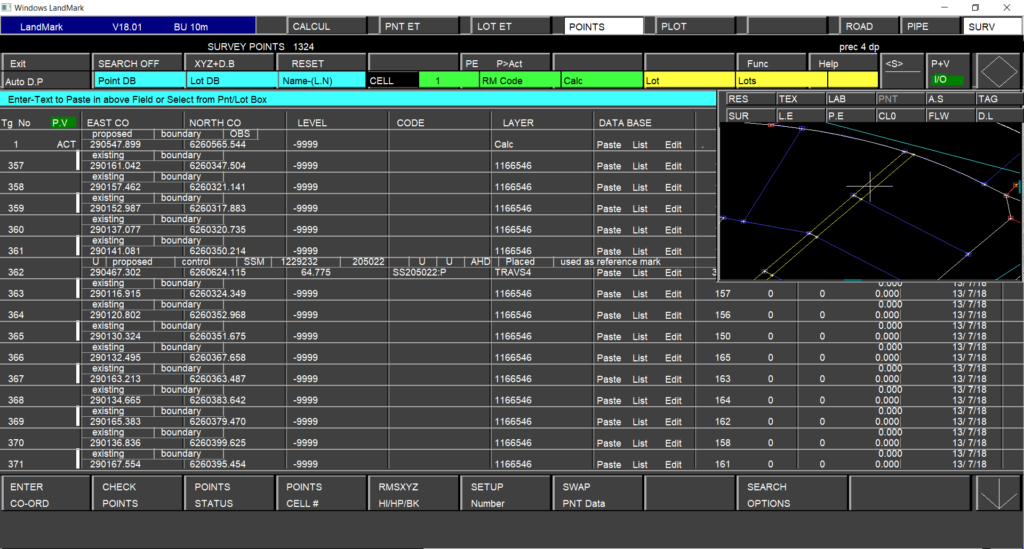
Visualization of dimensions by lines coloring and R road frontages for checking output to land.xml file
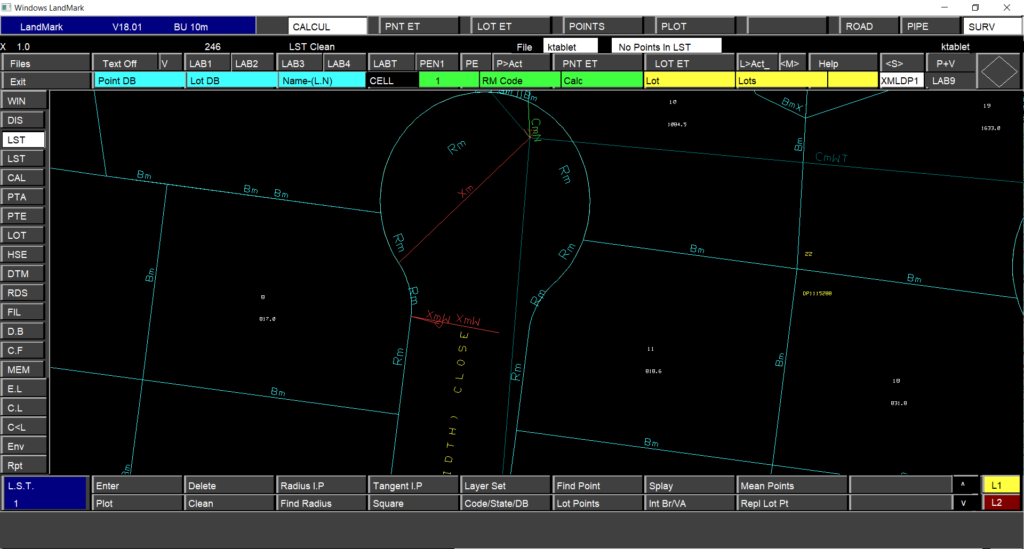
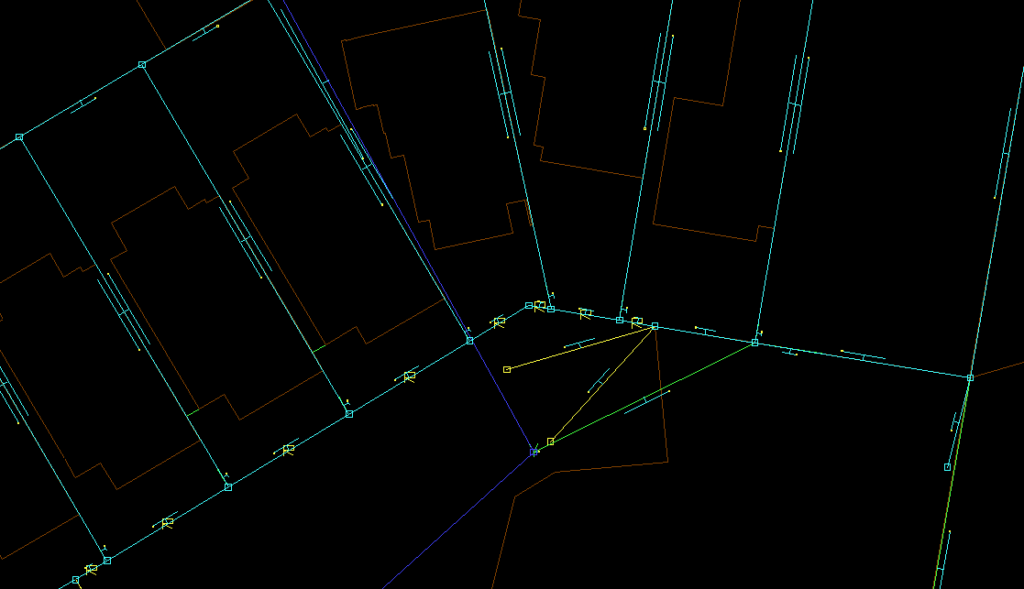
There are new lot types created in SURSUB to enhance it running more smoothly into the Land.xml file which is the LTO format for Plot plans. The Land.xml coding is automatic and sent to the data base with the ability to edit on screen before creating the file with the option to plot data:
D.P Lot (93) to set each DP orientation to display adjusted bearings and also to set X,Y of plan and compare azimuths between D.Ps also used to show survey connections when displaying the DP number of origin of measurement and description of measurements .Just scroll lots to check and edit lot and monuments data including land.xml data. Automatic positioning of names both for plot and land.xml and calculation screen.
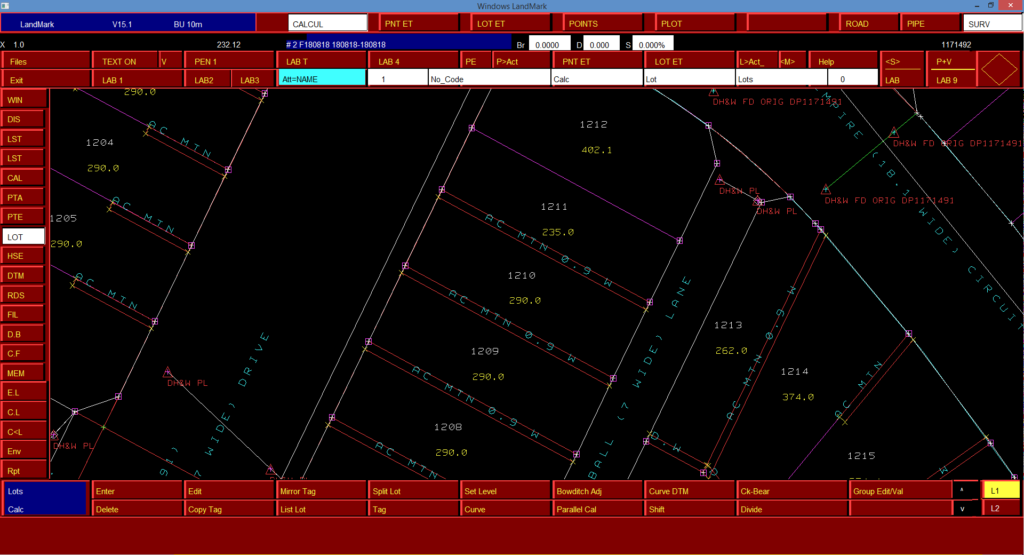
Offset Lot (87) is used to display offsets between points with option to tag a point as Monuments eg used to show kerb alignments, offsets to walls, building, fences etc. The survey point can be coded with type, state, condition and or by the Lot that it is in and the data base will record the origin plan, all data can be sent to plot or LAND.XML
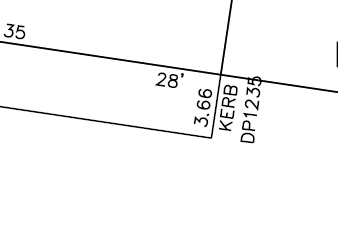
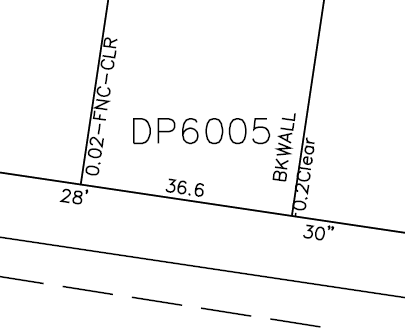
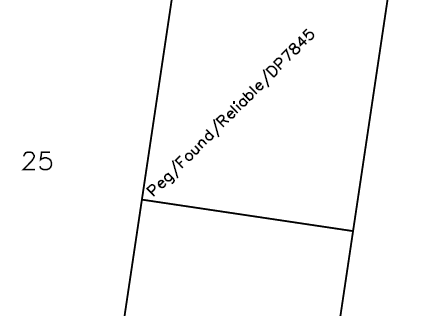
PM Lot (92) has been enhanced to hold control points data MGA x, y, z plus class, order ,method, condition, state , date, scale factor , zone etc which is used to plot SCIMS table or sent to LXML. This data can be read in directly from a CSV file and sent to plot or LAND.XML, Automatic plot table

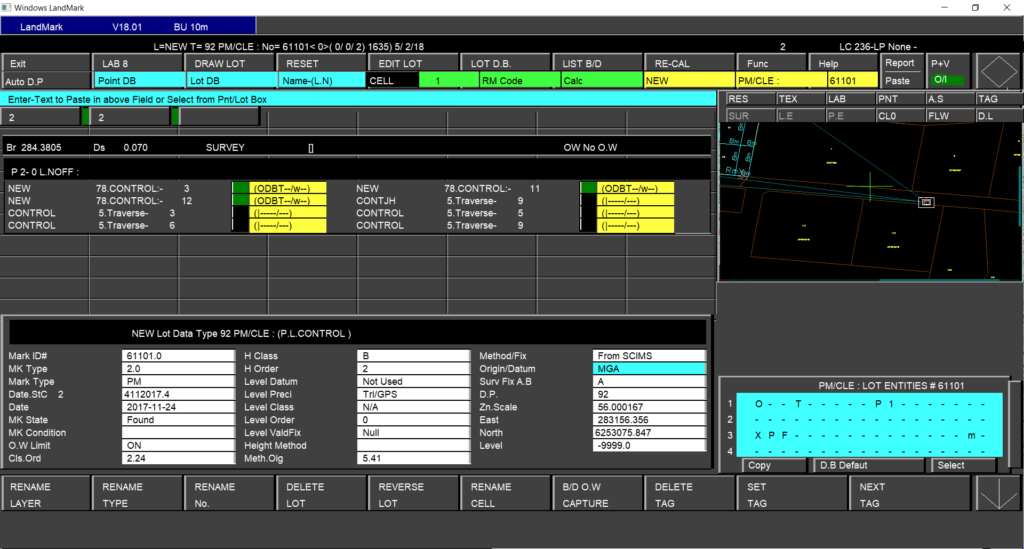
Control Lot (78) control lot is used to string PM Lots (92) points to display ground bearing/distance using MGA XY , scale factor and survey bearing/distance using points.
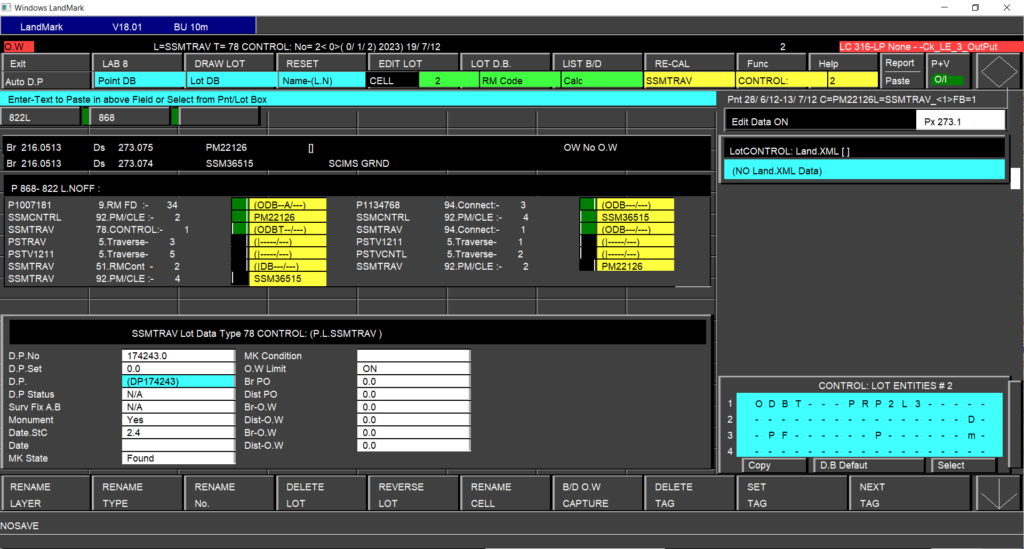
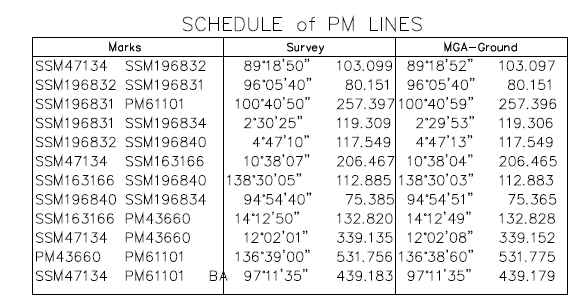
Reference Mark Lot (8,9) has been enhanced to hold state, condition, Origin plan D.P number.
Option to Over Write Bearing and Distance by PO measurement and if within 0.035”
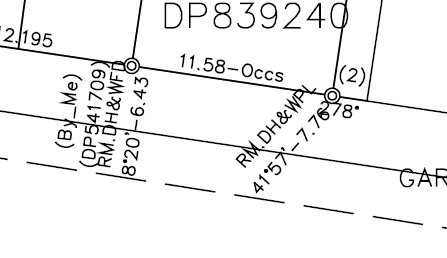
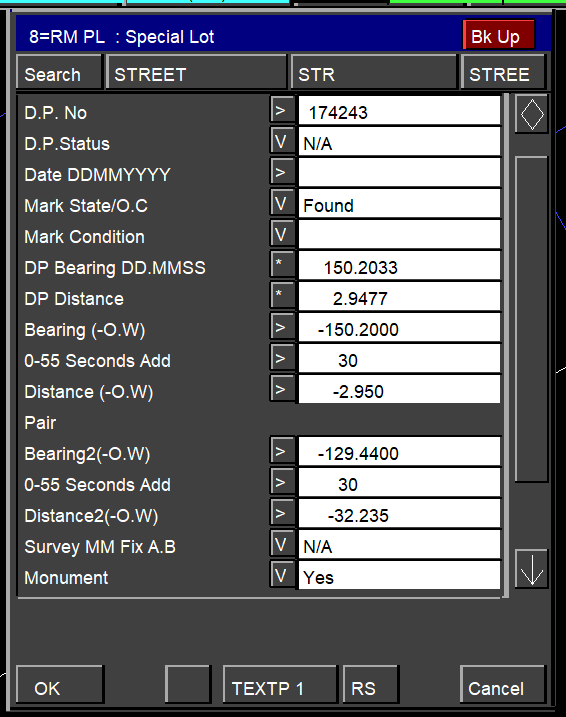
Connection Lot (94) also to show connections and Land.xml and a description of measurements
When using Traverse adjustments adjustment and the points were used as stations to create points by radiation you have the option to also adjust these radiated points if they are stored in the setup lots (88).
Text lots to add to dimensions

Irregular traverse Line with line table
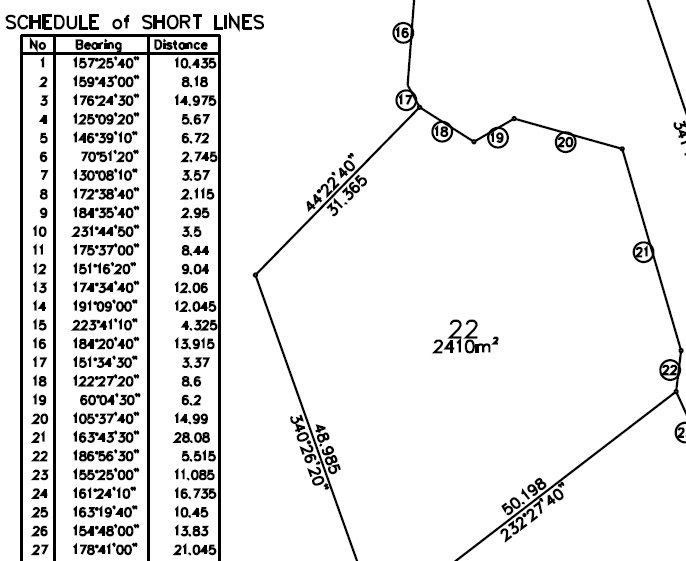
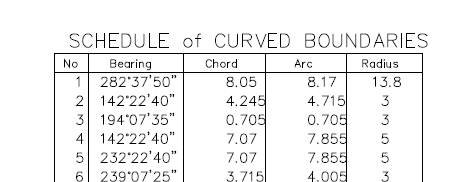
Easements Table or any parcel description , with automatic plot table
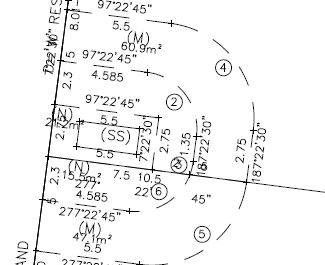

Part lots also have been added, to combine two and separate lots into one identity with a total area
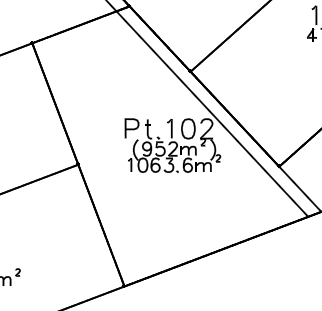
1-.Address table of lots

Land.xml in
View a group of DP plans on screen
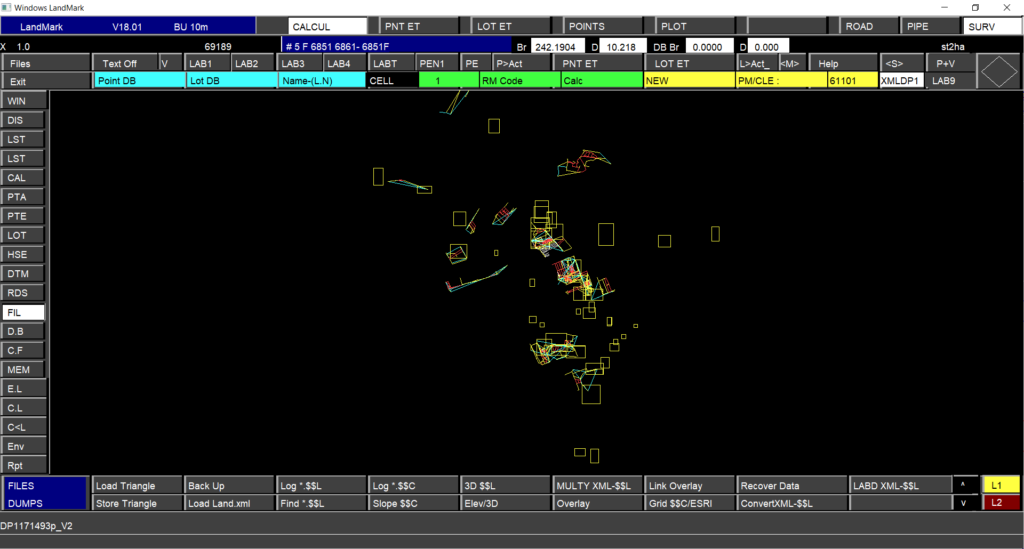
Zoom to display survey data with DP # with option to load in selected plans to procede
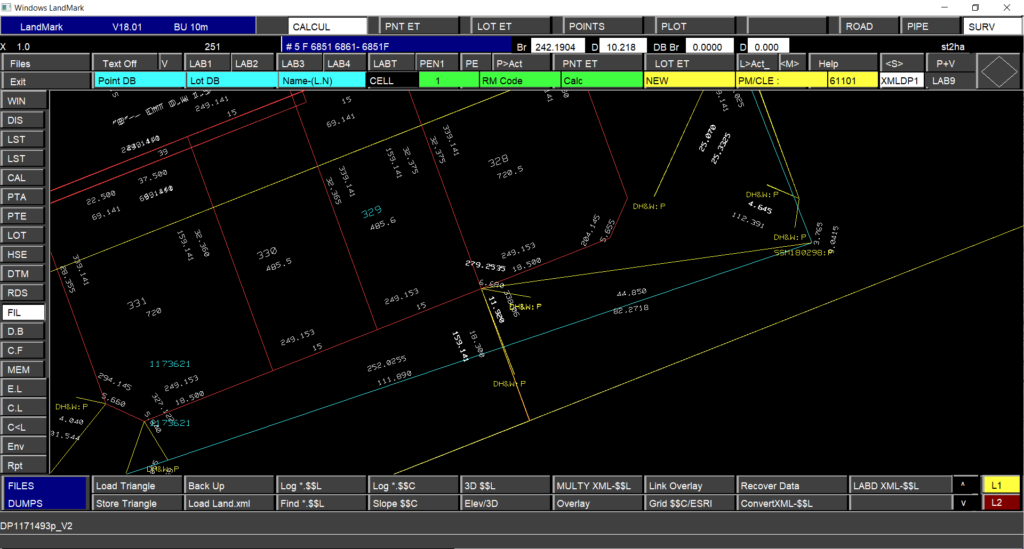
Strata plans
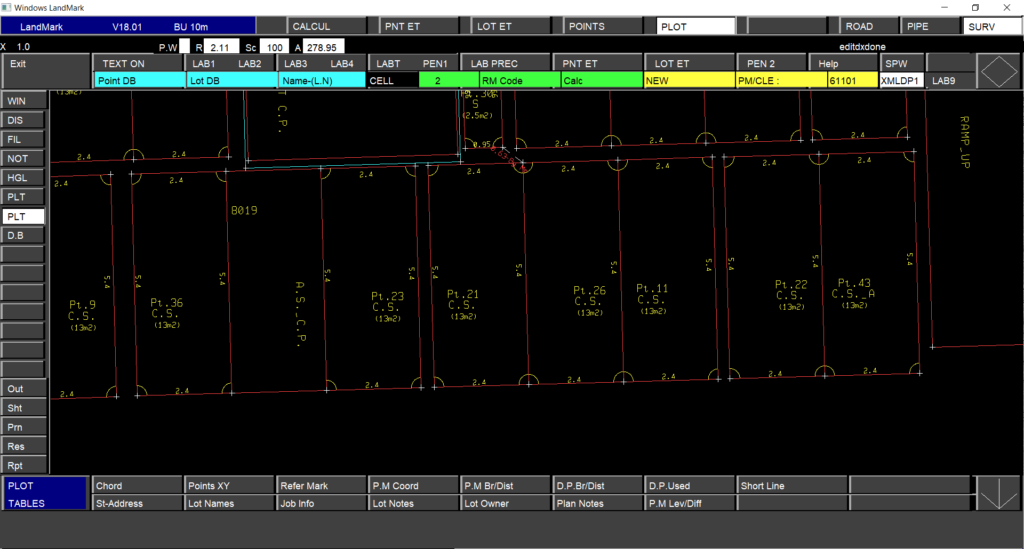
Multi lots used to add rounded areas
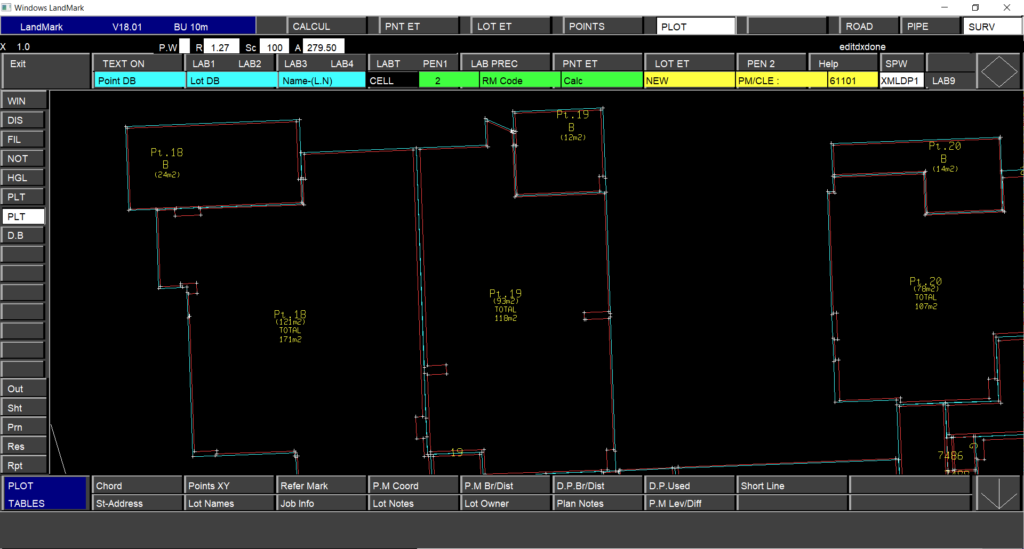
Part of first plan registered in NSW in LAND.XML ( by Phil Youdale)
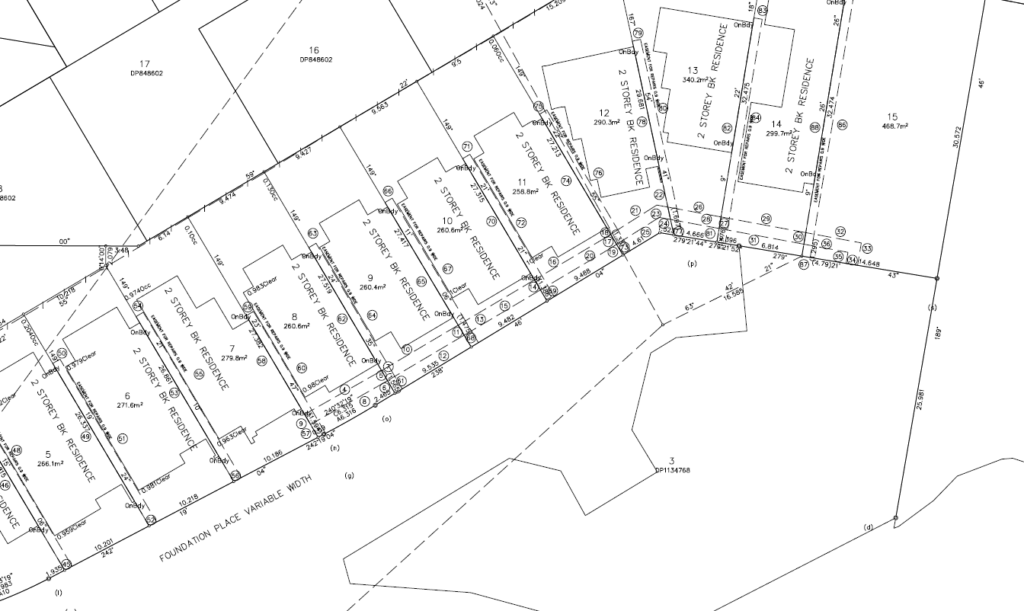
Example of one large land.xml file registered (by Graham Hall ) created with over 130 reference marks
Points 1138 , Reference 136, Monuments 210, Occupations 49 , Control 24 , Lots To File 234
Lots class lot 117 ,Easement 58 , Proposed Lots 48 , Control B/D 28 , Connection B/D 87
LOT B/D 468 , Point X Ref for B/D 582 ,LINES 12235
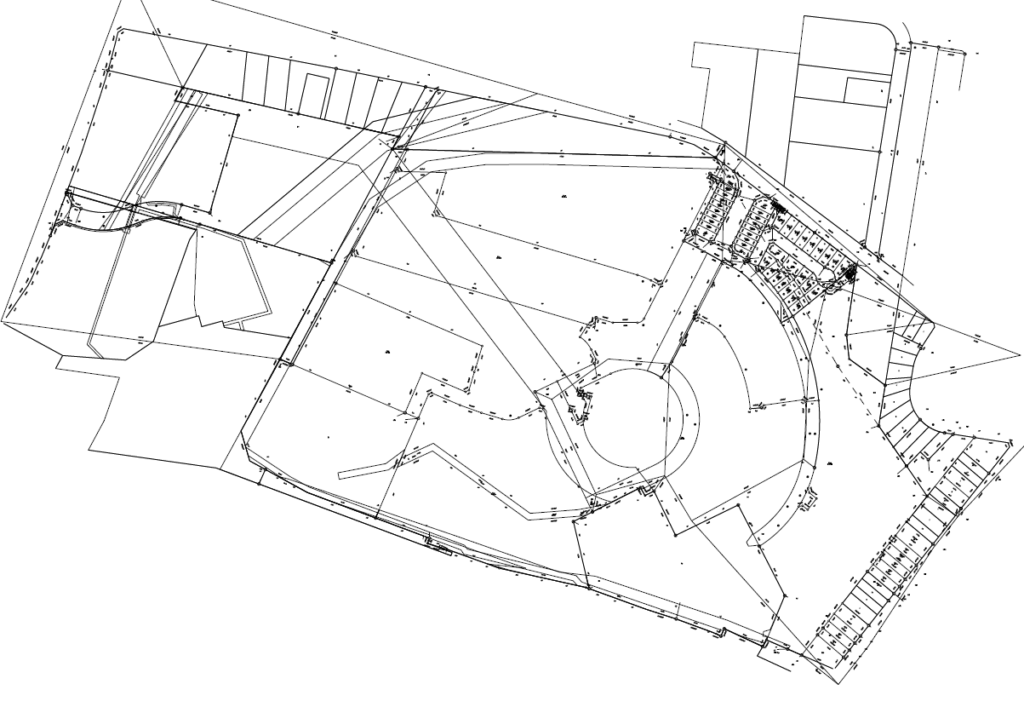


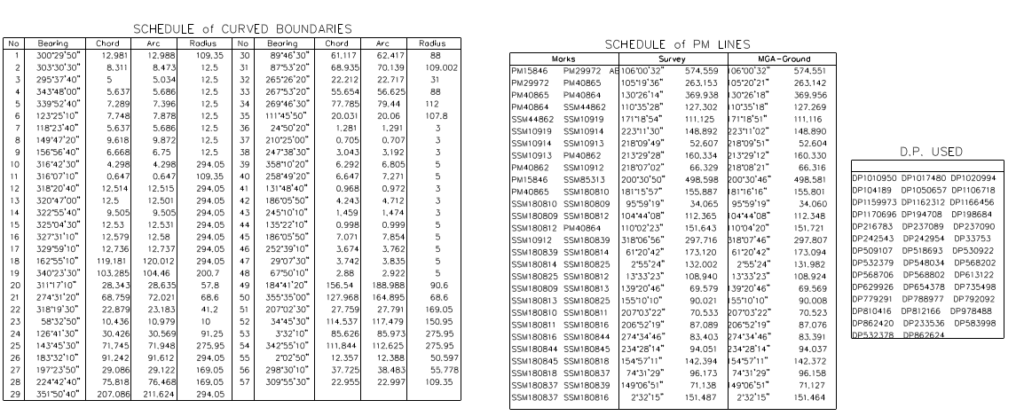
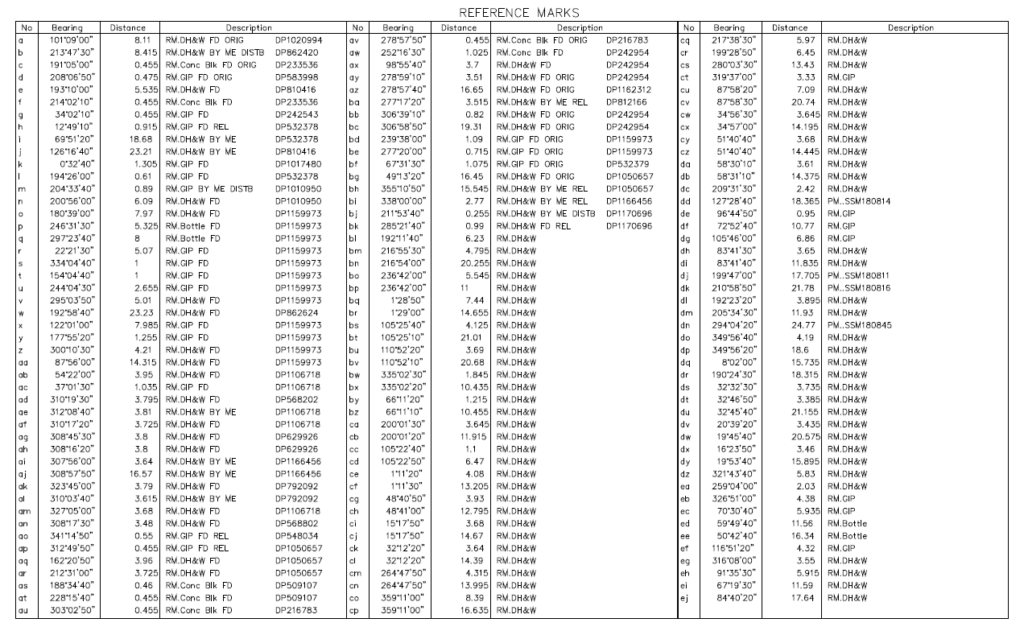
TORRAIN MODELLING
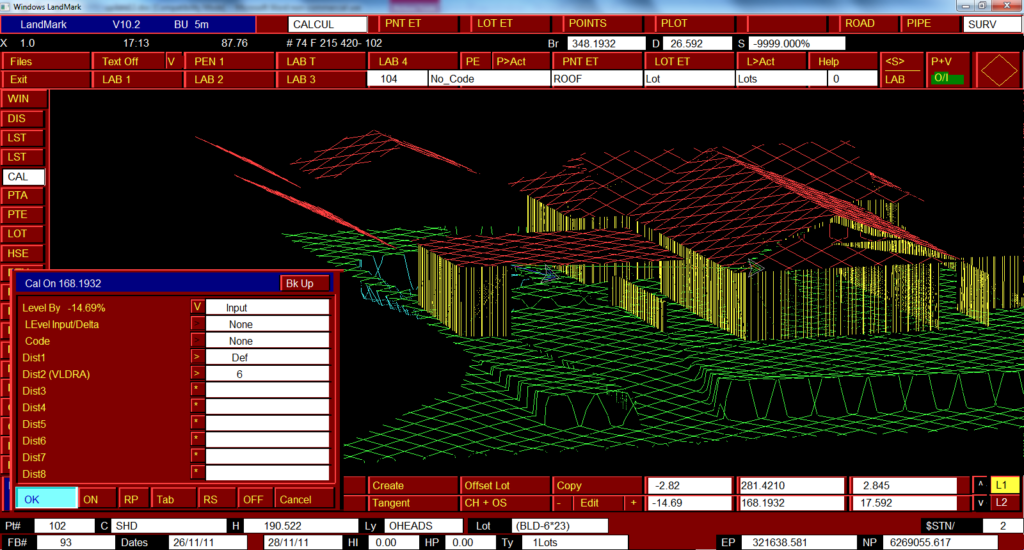 The options
The options
There are 3 types of triangular surfaces (a) Meshing of model (b).In a plane within lots eg roof (c) Vertical Profile by draping to the model for walls or fences or delta height from ground or to a fixed level using data base wall base. The Profile Lots (72) are used for modeling the face of walls, creating triangles and creating break lines around windows, deleting, break line in the vertical etc.
Survey calculations can be done in Plan mode or 3d mode or Elevation mode by using bearing, distance and slope or delta height, With LST DISPLAY option to display delta height between points clipped to the other model (overlay) RECO files are now unlimited for assigning the Layer Names and Entities Switches to points and lots, the lot layer names are only limited by number of lots and points layers are now 1000.
DXF output of triangles are in 3d faces , the layering is set in the Point Entities, either by plotter output or direct output to DXF file where lots are sent as closed polylines. Input of DXF has been rewritten to handle latter cad files with all text been sent to data base to be displayed on screen with options to assign text to survey data eg lot names , point levels . For closed polylines it will close lot back to first point.
Options have been added to filters using the LOT ENTITY switches to select data eg lots that are used in data base, lots with bearings turned on etc. Lot names use up to 4 ASCII characters as a lot name or large number in normal data or use the data base for a name of up to 80 characters eg “Path Way 4m Wide”. Option up to have 6 sets different of Lot Entities Switches in one file plus a separate On/Off switch for land.xml.
LAND.XML file creation for DP registration with automatic coding from survey data management and the plan production will also reflect this. Calculated dimension can have an override in both xml and plan to use the DP PO dimension. There is a review in file creation to list any possible problems. There are two co-ordinate systems where the PMs will hold MGA and a slightly different local point system. The Lot Entities has a new page added to set LAND.XML switches for eg state, class, type, format, title, location, irregular lines, new old to lots, plus others like Plan DP, type measurement. There have been 5 plans registered in NSW by Landmark including the first, plus another 3 on the way.
Point Entities, with new option for coding points in field to set monuments switches.
Triangles can be loaded in directly from a DXF file or Land.xml file. There checking options to find stray triangles. The ACTIVE LOT can be used to set the limit of volume calculations.
Help: Has been added to every button on the pop downs with option to select a prewritten text from help text and populate input box (eg Condition of point options are found , placed , not found , click one).
The generation of a secondary break line of chords around an existing arc with option to set lengths. These new break lines are used for 3d modeling or exporting curves where curves are not be used. Scanned plans can be displayed behind survey calculations and contours traced in by clipping the contour.
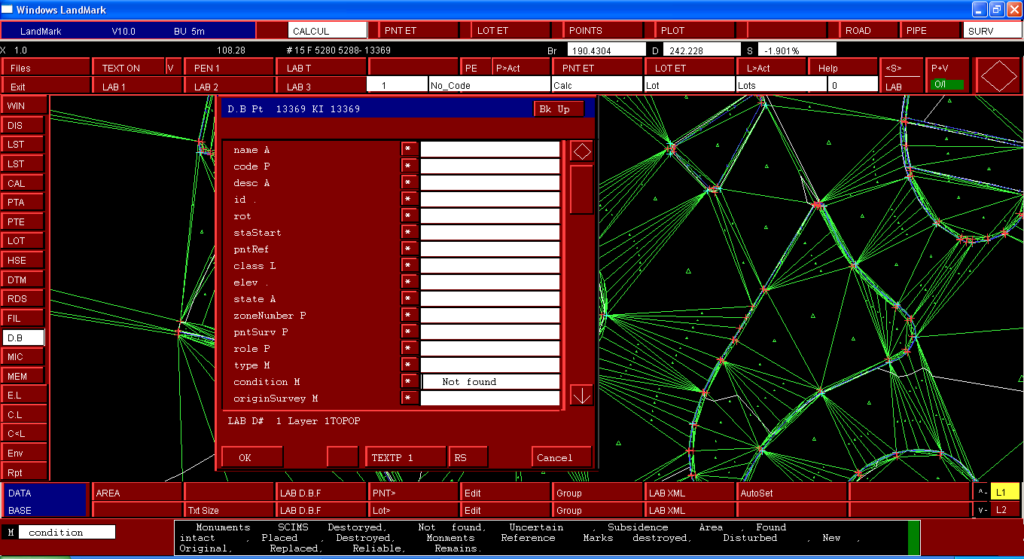
New Checks on Triangles
That display missing or overlapping triangles in different colours
ROAD
The Road Design automatic modeling has been improved by the use of trim lots, coding of points and with kerb returns now being able to have different profiles at each end. The gutter been fixed and the lip and top been transitioned between tangents points
Direct Road Design model example with swales

Trim lots at the road intersection
Road design points are controlled by the trim lots allowing any number of redesigns to be dumped into the model with ease

Lip levels transitioning around kerb return between to two different lip profiles
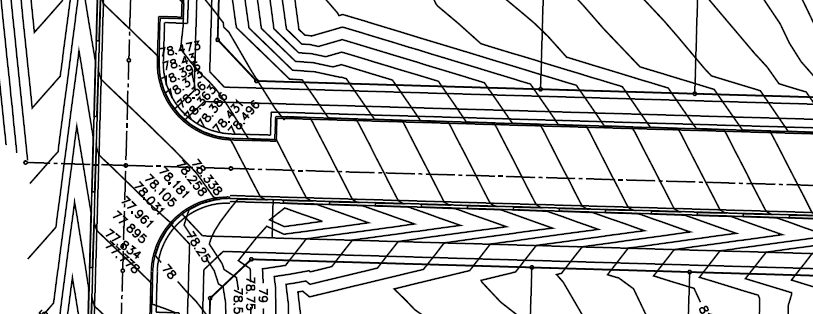
Road Design dumped direct into DTM with the use of trim lots it will automatically mask unwanted levels The extra chainages option to set 1 or 2.5 meters intervals with cross section thus interpolating on the fly at within a few minutes the roads with kerb returns and cul de sac with kerb developments are inserted into model masking overlapping NS level on design and break adjusting both design and NS.
NS model with trim lots
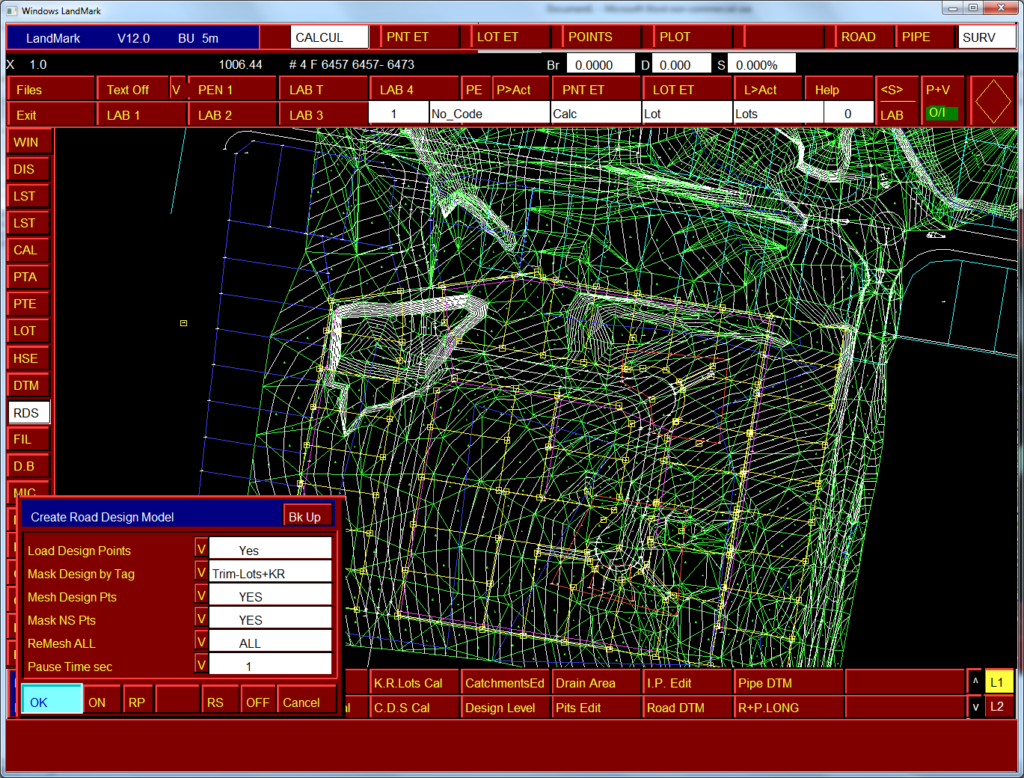 Design Model after Road Design Dump with hight intensity of chainages creating points and triangles
Design Model after Road Design Dump with hight intensity of chainages creating points and triangles
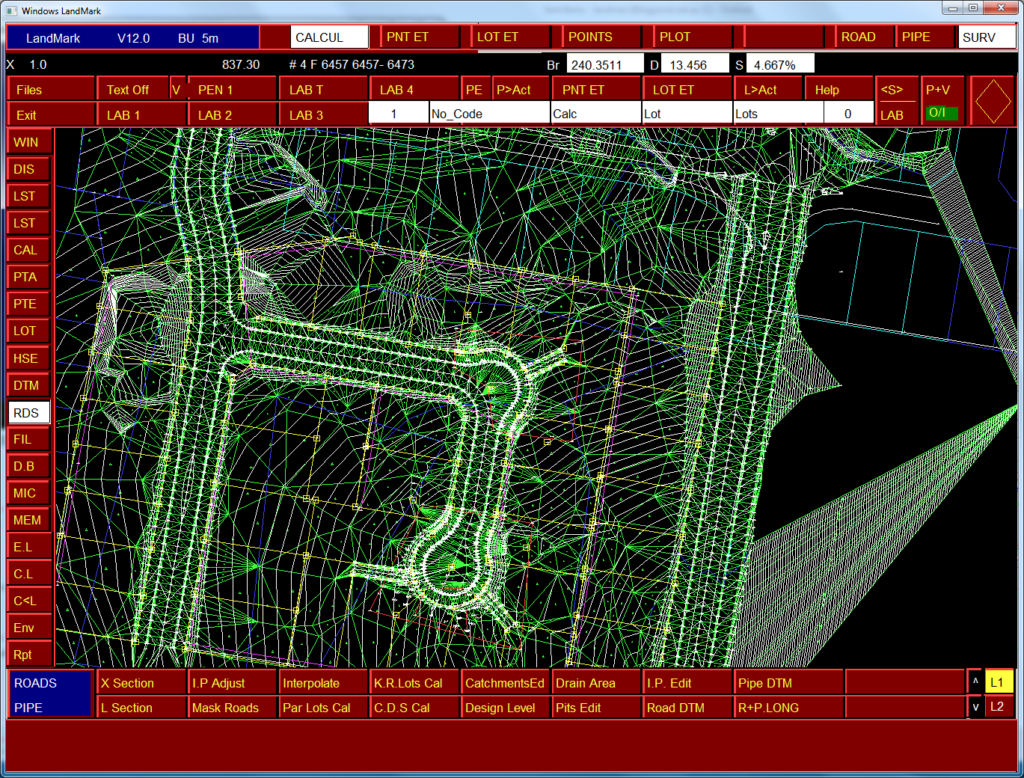 Cross sections display three surfaces design, natural and site fill from second model (blue)
Cross sections display three surfaces design, natural and site fill from second model (blue)
 Road Start and End Chainages of I.P and Typical automatic set from survey
Road Start and End Chainages of I.P and Typical automatic set from survey
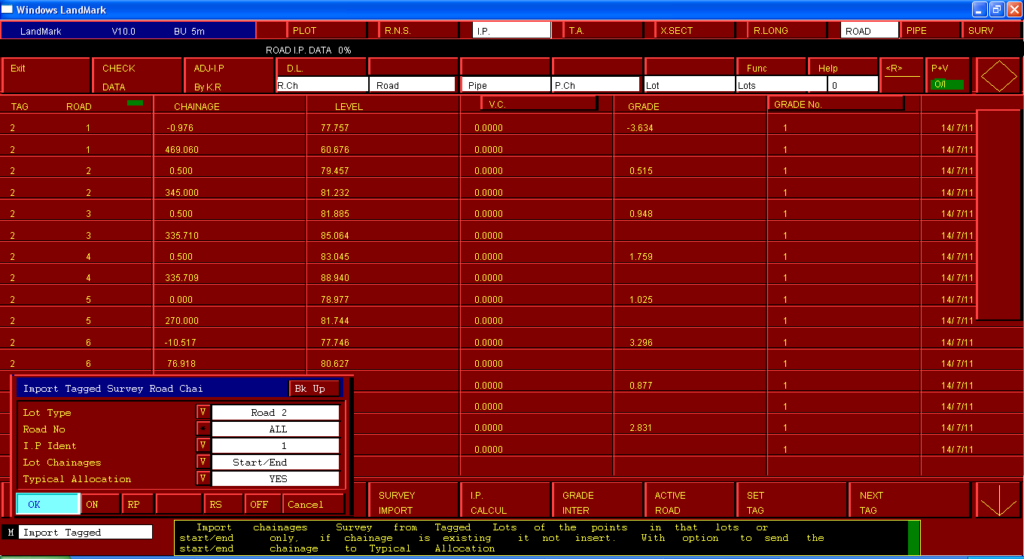 In ROAD in SURVEY IMPORT after Natural Surface is interpolated it will set the Start and End Road chainages for I.P and Typical Allocation of Road.
In ROAD in SURVEY IMPORT after Natural Surface is interpolated it will set the Start and End Road chainages for I.P and Typical Allocation of Road.
The survey data can be coded to
- Start and end chainages for volumes
- The start and end design chainage for output to the model
- Other points in survey can be coded to set the change of typical for Typical Allocations chainages .
Road Design cross sections design data you can view the survey
- Variable width strings names on cross sections with their Typical number ,
- Typical codes and offsets
- Typical number and variable identification number
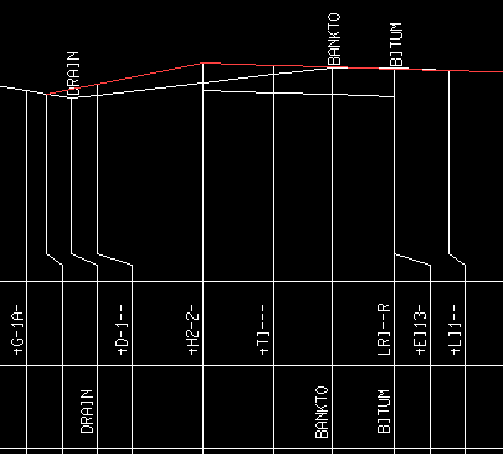
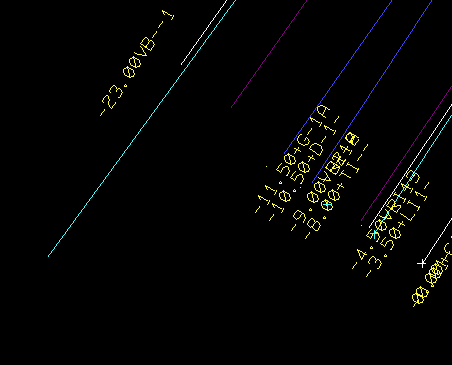
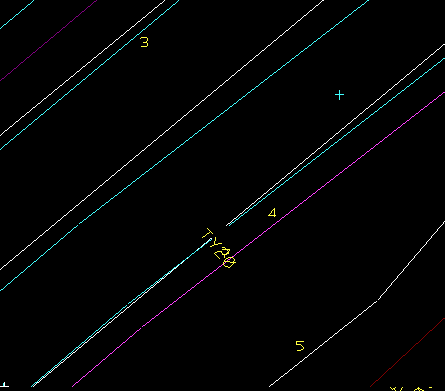
PIPE
Pipe Chainages and Pit names and Catchment area can be imported direct from SURSUB into PIPE. The areas obtained from Catchment Lots. The pit name is a combination of a pit counter and Pipe Line No (option to set) used for the naming of pit. Therefore the second pit on line 4 =2/4 .
The trial invert level is calculated from default invert depth coded on any survey point .The survey data can be coded to set the start and end chainages of quantities in pipe . The data from SURSUB is also used to calculate the k factor at pits , bends and drops. This takes just seconds to populate Pit data with chainages and catchments together with interpolation of levels from design model or direct to the road design
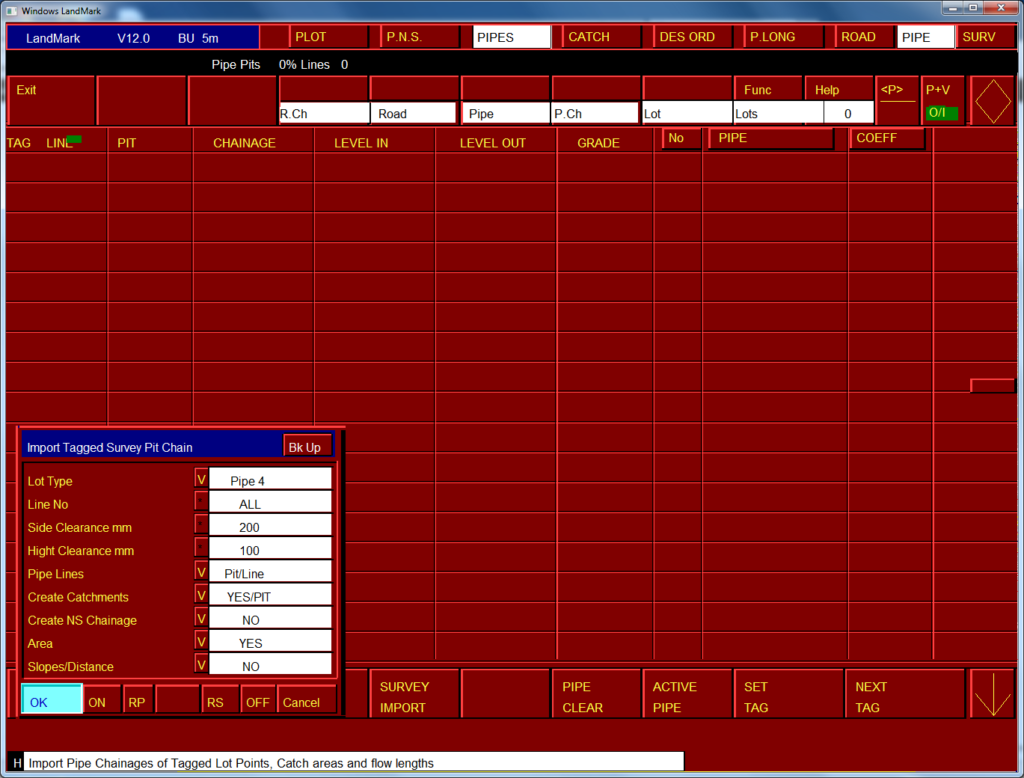
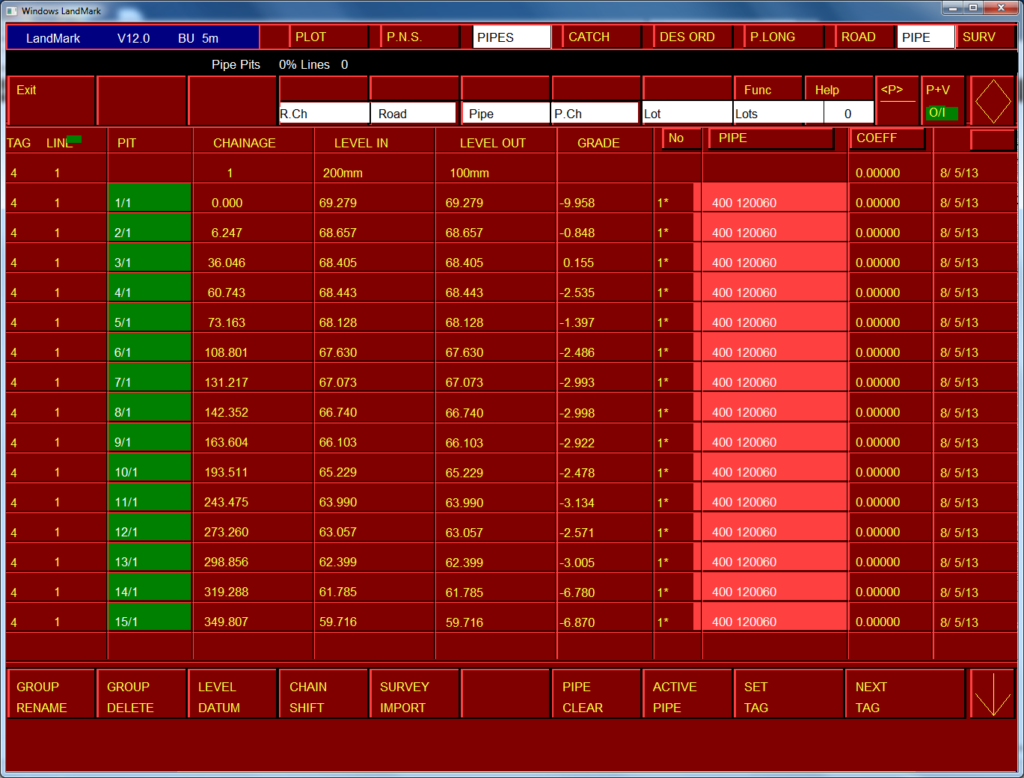 There is are options to set default data for catchments
There is are options to set default data for catchments
- Areas within roads, their area co efficient , Pit type, grate area , grate area and x fall. The Slope slope of road is imported from road design . The Pipe NS data can assign itself road number by a search thus linking levels to road design
- Areas outside roads, their area co efficient , Pit type, grate area
In PIPE when editing natural surface data there is an option to search for any previously designed roads that maybe applicable. If there is the road number is recorded with Pipe NS thus allowing the linking in from ROAD all applicable road design levels.
The number of catchments has been increased to 300 and design pipe line increased to 100. Thus there is very little manual input for pipe design except the design order, design inverts and type and size pipes
.. These road models with option to create pipe inverts lots with level from pipe design levels as a string can be export
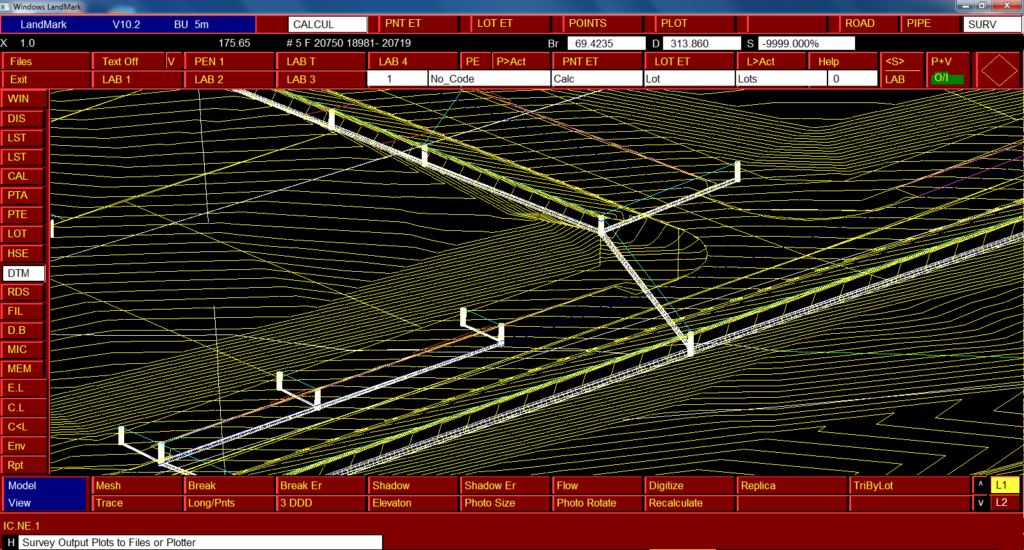
PIPE / ROAD long section profiles has the option to label Survey Point Data with Point numbers, codes, Pint Layer Names , offsets to center line , with the option to add data base on top of profile.eg pole numbers, weld numbers, pipe diameters , dates, heights . Option to plot detail like trees, building etc
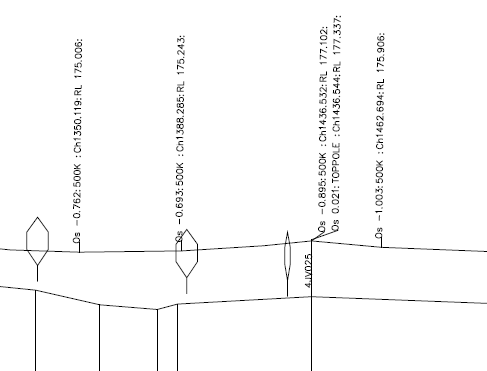

2018 Marc Computer Services P/L